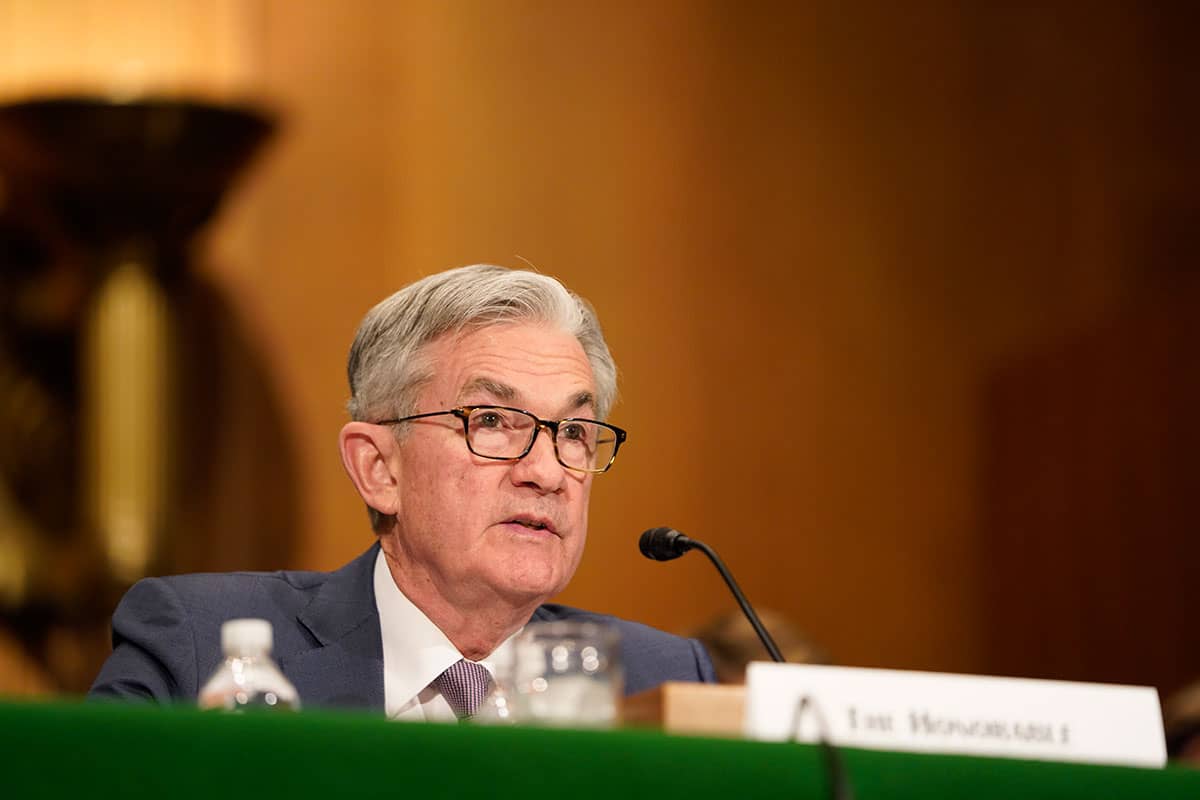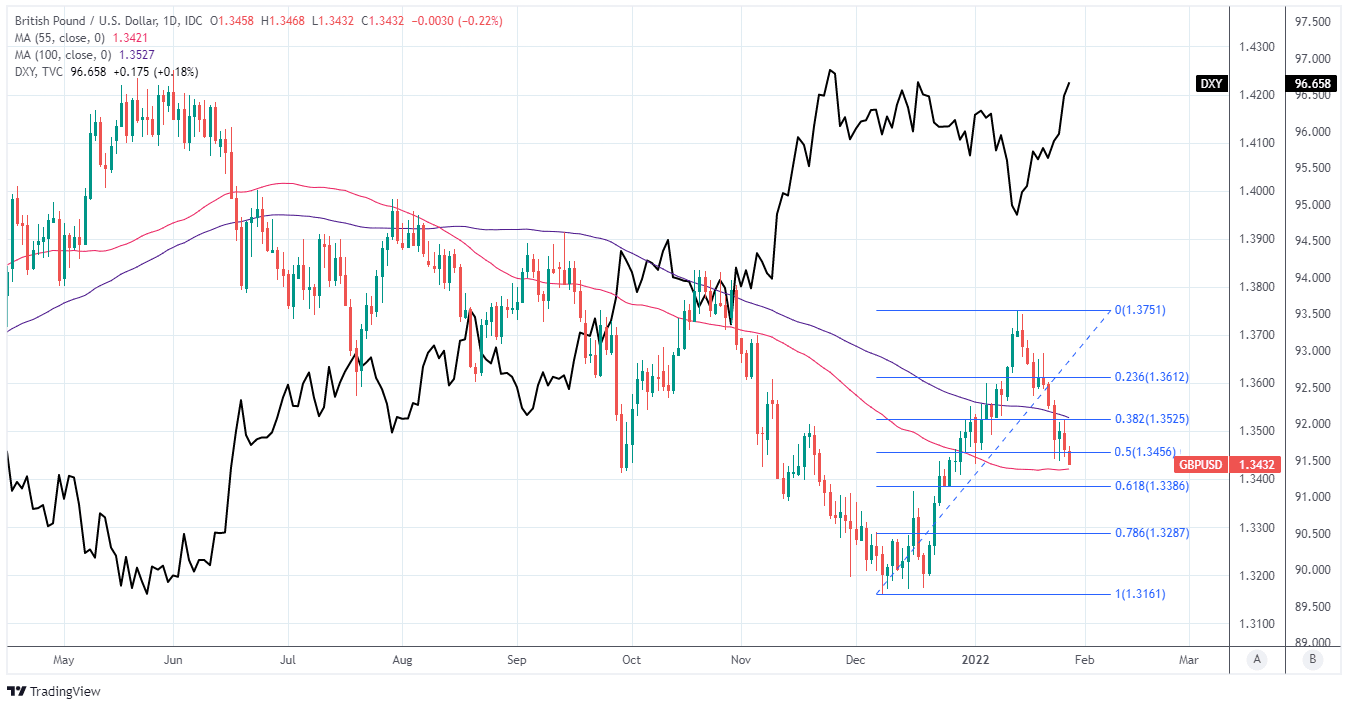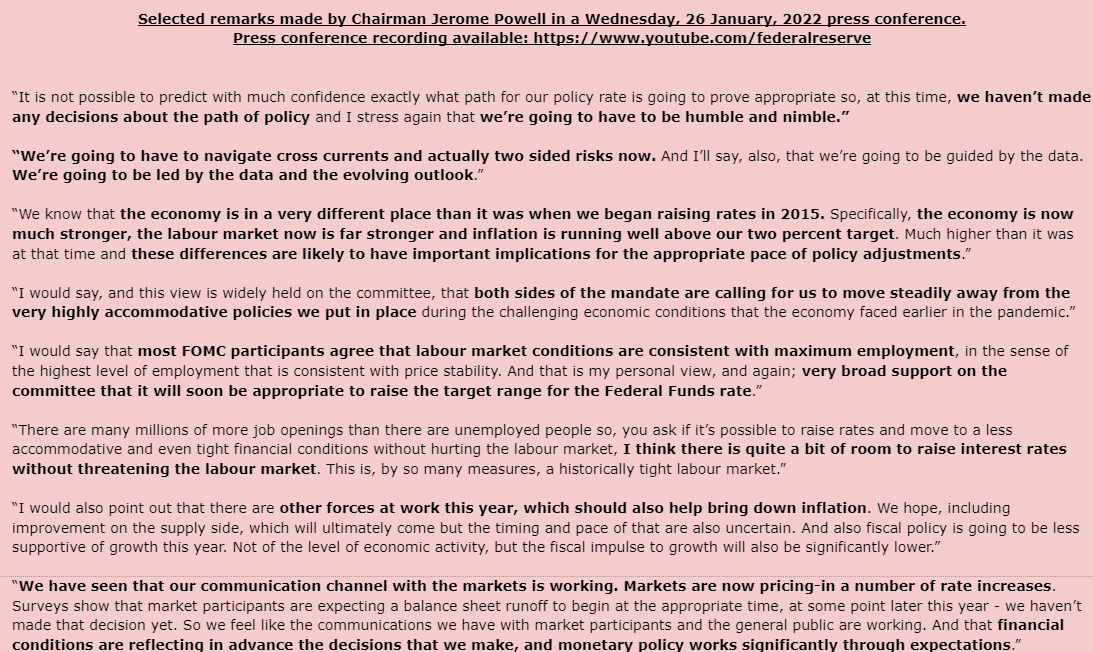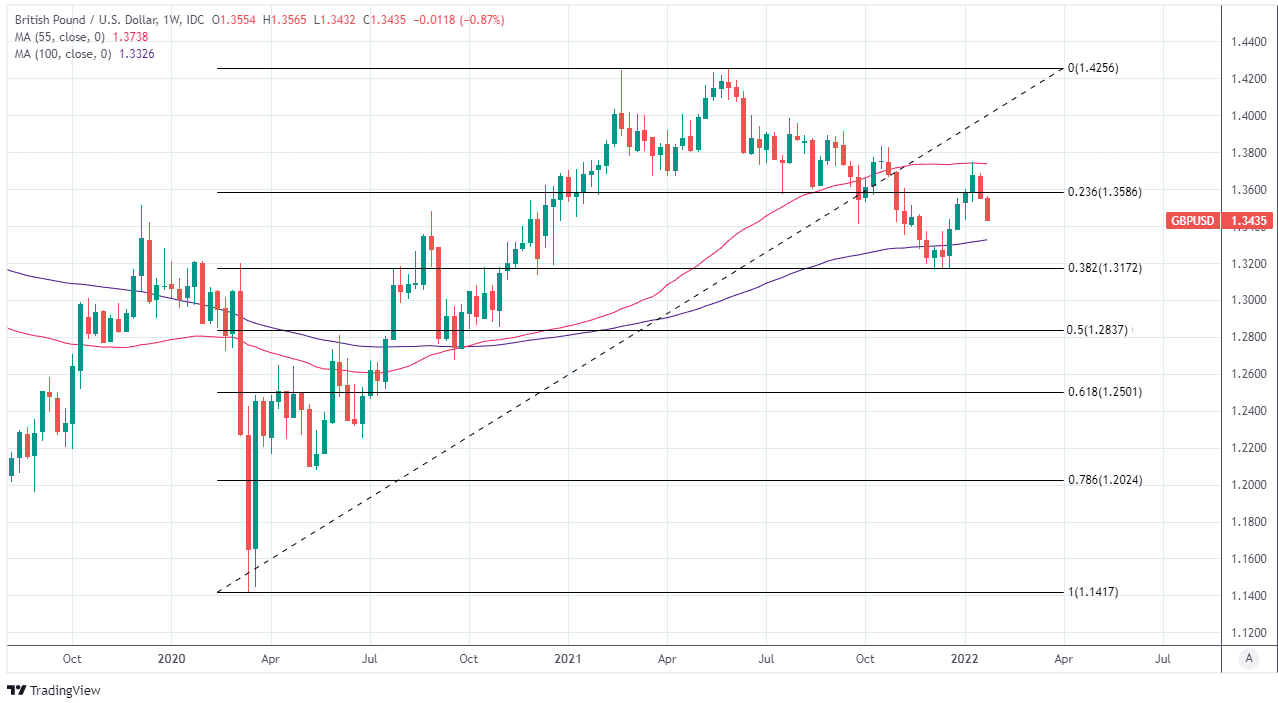Pound / Dollar Tests 1-Month Lows in Wake of Fed Update
- Written by: James Skinner and Gary Howes
- GBP/USD risks slide back toward 2021 lows
- As USD rally accelerates on Fed policy stance
- Fed tees up for March liftoff, faster tightening
- Leaves supports at 1.3421, 1.3386 vulnerable

Above: Federal Reserve Chairman Jerome Powell. Image © Federal Reserve.
The Dollar rallied following the January Federal Reserve policy announcement, leaving the Pound to Dollar exchange rate at risk of sliding towards last year's lows over the coming days.
Dollars were bought widely overnight and into the Thursday session after the Federal Reserve provided an advanced warning that U.S. interest rates could rise in March while also suggesting that further increases could be announced and at a quicker pace than was seen during the last monetary tightening cycle.
"The US dollar has strengthened overnight on higher US Treasury yields in the wake of a hawkish Federal Reserve (Fed) policy announcement last night," says George Vessey, a currency strategist at Western Union. "The US dollar index, which measures the buck against major peers, has climbed to near 5-week peaks. GBP/USD is testing 1-month lows."
Above: GBP/USD shown at daily intervals with U.S. Dollar Index. Includes major moving-averages and Fibonacci retracements of December recovery indicating possible areas of support for Sterling.
- GBP/USD reference rates at publication:
Spot: 1.3425 - High street bank rates (indicative band): 1.3055-1.3150
- Payment specialist rates (indicative band): 1.3300-1.3358
- Find out about specialist rates and service, here
- Set up an exchange rate alert, here
"In light of the remarkable progress we’ve seen in the labour market and inflation that is well above our two percent longer run goal, the economy no longer needs sustained high levels of policy support. That is why we’re phasing out our asset purchases and why we expect it will soon be appropriate to raise the target range for the Federal Funds rate," Chairman Powell said in his introductory remarks at Wednesday’s press conference.
"We’ll make a decision at the March meeting. We’ll make a decision whether to raise the Federal Funds rate. I would say that the committee is of a mind to raise the Federal Funds rate at the March meeting assuming that conditions are appropriate for doing so," Powell also said later in the press conference.
Offering further inspiration to the Dollar were other remarks from Wednesday’s press conference in which Chairman Powell indicated that a stronger starting point for the U.S. economy and higher levels of inflation are likely to mean that rates rise faster than in the previous tightening cycle.
"We know that the economy is in a very different place than it was when we began raising rates in 2015. Specifically, the economy is now much stronger, the labour market now is far stronger and inflation is running well above our two percent target. Much higher than it was at that time and these differences are likely to have important implications for the appropriate pace of policy adjustments," Powell said.
The Fed waited a full year between December 2015 and December 2016 before lifting its interest rate for the second time during what was its first monetary tightening cycle since the 2008 financial crisis, Powell confirmed Wednesday that the bank could be much quicker to follow up its first rate rise with additional moves this time around.
Above: Selected remarks from Chairman Jerome Powell at January 26 FOMC press conference.
Secure a retail exchange rate that is between 3-5% stronger than offered by leading banks, learn more.
"Powell did not pull any punches at this meeting, in what was a definitely hawkish press conference. As much as he emphasised "steadily" raising rates, Powell was unable to commit to just doing a few hikes this year. More impressively, he did not shoot down the idea of doing more than just 25bp per meeting," says Mazen Issa, a senior FX strategist at TD Securities.
Pricing in the overnight-indexed-swap market already implied that investors already saw three 0.25% increases as likely to take the Fed Funds interest rate range up to between 0.75% and 1% this year, with some chance of a fourth, although Chairman Powell did not preclude the bank from moving even faster than that in Wednesday’s remarks.
"Chair Powell said the FOMC wants to ‘move steadily away’ from easy monetary policy. Therefore, we consider a 50bp increase in the Funds rate is unlikely at this stage. The Funds rate futures market suggests around a 20% chance of a 50bp increase in March," says Joseph Capurso, head of international economics at Commonwealth Bank of Australia.
Above: GBP/USD shown at weekly intervals with major moving-averages and Fibonacci retracements of 2020 recovery indicating possible areas of support for Sterling.
"GBP/USD dropped near 1.3435 and could test the support level of 1.3419 today. The local UK data calendar is quiet until the Bank of England’s (BoE) February policy meeting next week. Further falls in GBP are possible in the London session as markets continue to digest the FOMC’s policy decisions. Nevertheless, the prospect of BoE tightening will likely help place a floor under GBP,” Capurso and colleagues said on Thursday.
The Fed has moved rapidly in recent months to prepare financial markets and the real economy for a withdrawal of the extraordinary monetary support provided to the U.S. and global economies since the onset of the coronavirus crisis due to significant and sustained increases in inflation.
Much of the recent inflation originated from global economic disruption brought on by the coronavirus pandemic and government responses to it, although it has lasted for longer than policymakers anticipated and there’s a danger that it could be exacerbated in the months ahead by robust domestic conditions with the U.S. economy now fully recovered from its 2020 losses and the job market back in rude health.
"Powell spent a lot of time discussing upside risks to inflation and simultaneously arguing that the Fed is now at maximum employment. The Fed needs to tighten financial conditions further to put an end to the very strong inflation narrative among consumers, businesses, investors and in the media and hence we modify our Fed call now expect five rate hikes this year," warns Antti Ilvonen, an analyst at Danske Bank.







